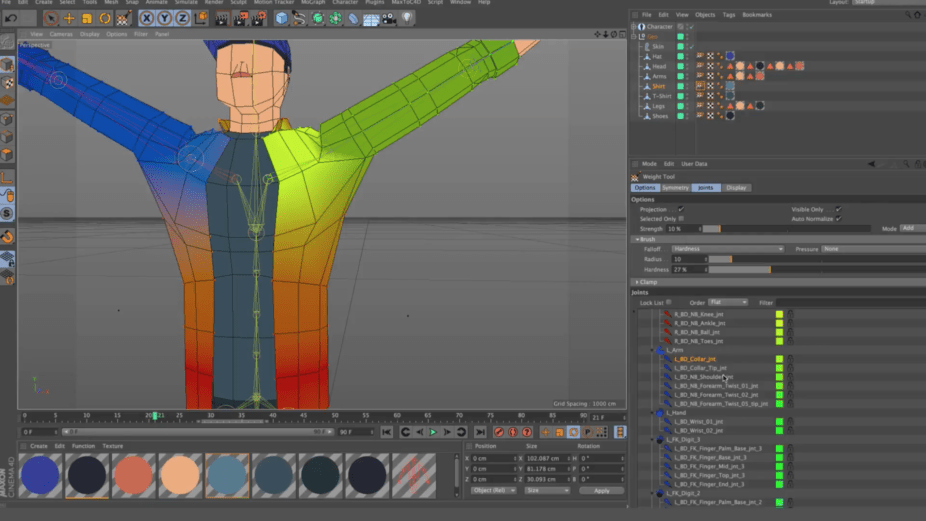

A surface considered to emit light by AR3 GI in Cinema is one that has a material with an active illumination channel, or one that is directly lit by a standard Cinema light source. Samples called stochastic rays are sent outward from surfaces into the scene to find surfaces that emit either direct or GI reflected light.

To save processing time and still arrive at the same result, Global Illumination simulates this behavior, paradoxically, by working in somewhat the opposite direction. The output of any of these three, absorption, refraction, and reflection, never return more or less energy than went into it. Light rays travel through a vacuum at 299,792.458 km/s until they hit other surfaces and are either absorbed (stopped), refracted (slowed), or reflected (reversed), often, as with glass, in a combination of all three. For every doubling of the distance traveled, a contact surface will receive a quarter of the illumination. In the real world, light rays emit from a heated surface and travel in all directions, diffusing in intensity following the inverse square rule. I'll return to the GI modes after a quick discussion about the other options found here in the general settings page of the render settings, since Diffuse Depth and Gamma are particularly useful settings to start with.ĭiffuse Depth: The number of surfaces rays will test. Getting good GI results from AR3 doesn't generally require one to know everything described hereafter, but if you want to tweak your results, render an animation, or just want to know more about the inner workings of Cinema's new GI, this tutorial is for you.ĭiving right into the GI General Illumination render settings, users select a GI mode (from the dropdown menu shown above), a Diffuse Depth, Primary and Secondary Intensity, and Gamma correction if desired. To begin the experimentation process to judge which preset combination a scene will do best with only requires the user to activate GI and hit render using the GI default settings. Next to each preset is a bullet that can be opened to edit all settings that fall within the preset category. Cinema users that until now wanted better GI in Cinema's native Advanced Render should appreciate the improved render performance and control. VRay users may notice some similarities, while AR2 users will need to become acclimated to new terminology, settings and controls.
#Cinema 4d r12 render tag upgrade
CINEMA 4D Version 11 AR3 GI is a major upgrade from AR2 with a completely revamped new state of the art Global Illumination native render engine for Cinema 4D.


 0 kommentar(er)
0 kommentar(er)
